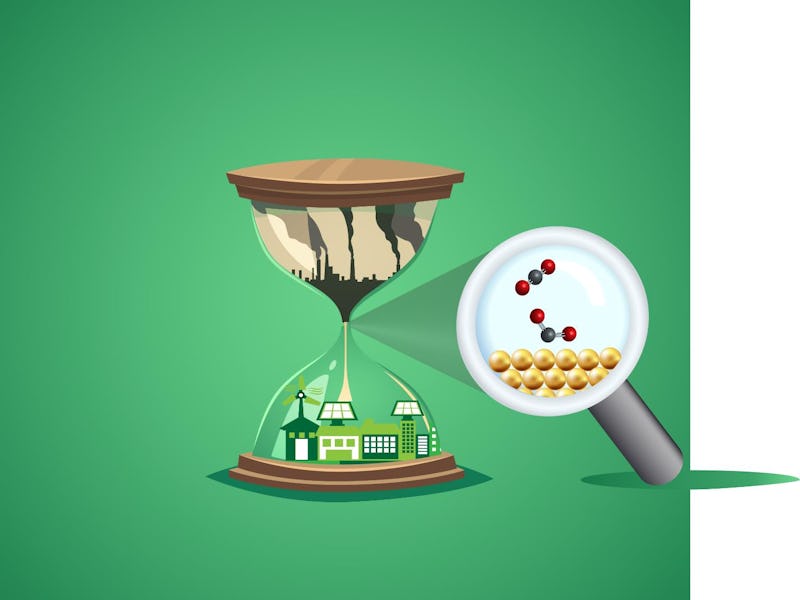After 150 Years, We Finally Had a Breakthrough Toward Turning CO2 Into Fuel
It's a chance to turn something very abundant into something very useful.

For a century and a half or more, researchers have been trying to figure out how to do something useful with all the carbon dioxide floating around in the atmosphere. We have loads of the stuff, we emit it every time we exhale, but all it’s doing is hanging around in the atmosphere, making our planet warmer and causing a number of potentially very unpleasant side effects in the process.
Scientists would really love to find a way to turn it all into fuel, which would presumably kill two birds with one stone by giving us a replacement for greenhouse gas-emitting fossils. But this has been easier said than done: Not only have scientists struggled to figure out how to store whatever gets reduced from the carbon dioxide, they’re still struggling to understand how carbon dioxide reduction can even be catalyzed in the first place.
In other words, scientists have basically been messing around with CO2 since the mid-19th century, mixing it with different materials, heating it up, etc., only occasionally achieving a reaction (“150 years” is a reference to an 1869 experiment in which researchers used an electrocatalyst to convert CO2 into formic acid, a preservative). But while researchers have long understood this potential, they didn’t really understand what made these reactions take place. That made carrying out experiments in a controlled manner impossible, until now, thanks to a new experiment carried out by researchers at Columbia University School of Engineering. The findings of their paper were published today in Proceedings of the National Academy of Sciences.
“We started doing this like how other people are doing this, through trial and error, and playing with different materials to see how the efficiency of CO2 conversion depends on material properties,” lead author Irina Chernyshova, associate research scientist at Columbia University School of Engineering and Applied Science, tells Inverse. “But that could take a life span.”
Satellite imaging of carbon dioxide in Earth's atmosphere.
Their breakthrough, Chernyshova explains, has to do with the process of electrochemical reduction, or the conversion of CO2 into a simpler molecule by adding electrical energy. Using surface-enhanced Raman spectroscopy, the team was able to observe for the first time that carbon dioxide can be reduced using a single intermediary — carboxylate which attaches to the surface of the carbon and oxygen molecules — instead of two.
“For 150 years, people have known this is possible, but they [could not] for 150 years commercialize it, because they do it in a non-systematic way,” Chernyshova said. “You cannot screen all materials in all possible combinations.”
Now that they understand carbon dioxide electroreduction better, researchers around the world now have much better guide rails for their own research, not just in the field of renewable energy but with the goal of reducing CO2 into any number of more useful molecules, for example fertilizers. And because we know more about this process’s proverbial “step one,” experiments get much cheaper and easier to carry out, hopefully with a knock-on effect.
“With this knowledge and computational power,” says the paper’s co-author Sathish Ponnurangam, in a press release, “researchers will be able to predict more accurately the reaction on different catalysts and specify the most promising ones, which can further be synthesized and tested.”
Alongside efforts to catalyze CO2 using direct sunlight, the process more commonly known as artificial or semi-artificial photosynthesis because of the inspiration it draws from plants, efforts to transform CO2 into fuel or breathable air are gaining steam. Earlier this month, researchers at the University of Cambridge in the United Kingdom figured out how to more efficiently split water molecules into hydrogen (which can be used as a fuel) and oxygen using an enzyme found in algae called hydrogenase.